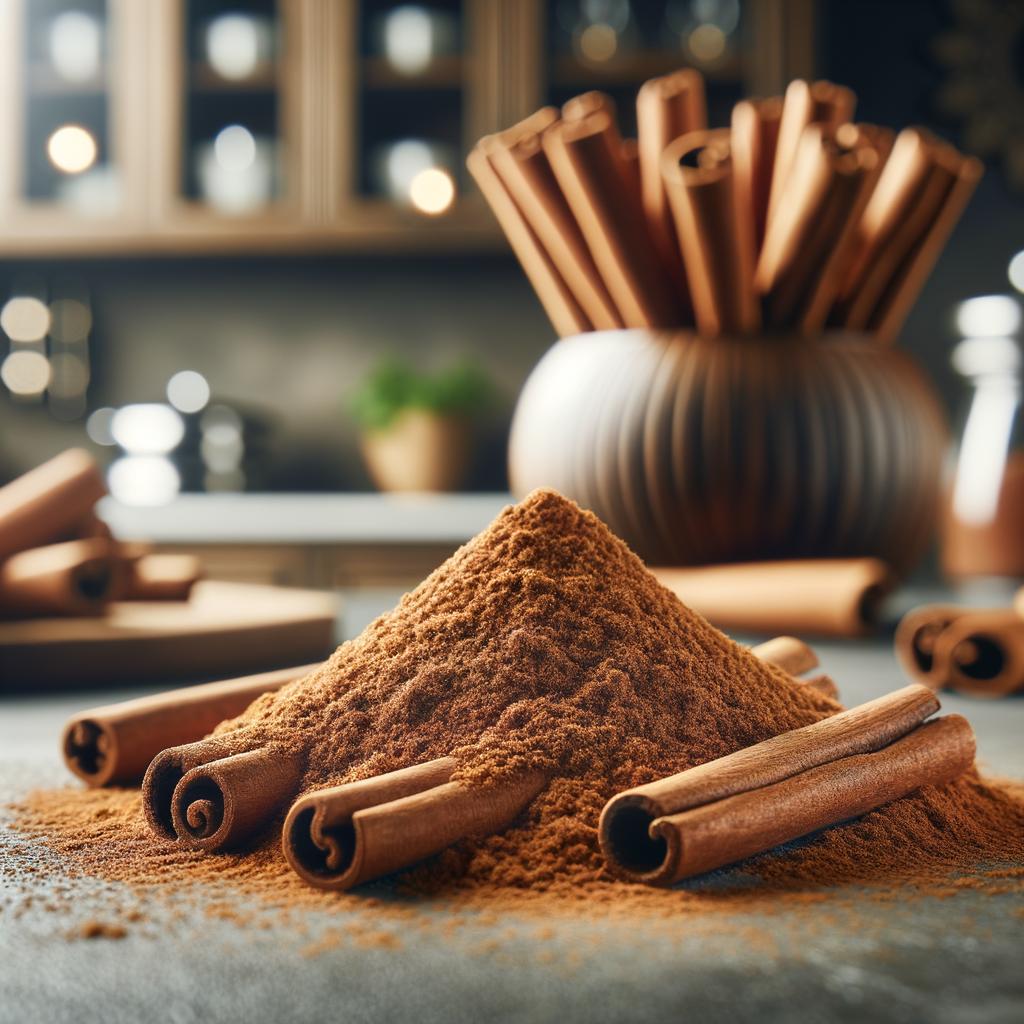Cinnamon

Description
Cinnamon, an enchanting spice that has fascinated mankind for centuries, is derived from the inner bark of trees from the Cinnamomum family. Its rustic beauty is encapsulated in its rich, reddish-brown hue, coiled tightly into what we recognize as cinnamon sticks, or ground into a fine, aromatic powder. The texture of cinnamon is warm and woody, with a slightly rough touch in its stick form. Its flavor profile is a captivating symphony of sweet and spicy, with a hint of clove and citrus, exuding a warmth that dances on the palate. What sets cinnamon apart from its spice counterparts is its unique ability to add depth and warmth to both sweet and savory dishes, a versatility that is not common among other spices.
Primary Uses
Cinnamon is a culinary chameleon, used extensively in a plethora of cuisines around the globe. In the sweet realm, it is a key player in dishes like cinnamon rolls, apple pies, and spiced lattes, while in the savory world, it lends its magic to Moroccan tagines, Indian curries, and Middle Eastern stews. Beyond its culinary uses, cinnamon is used in traditional medicine for its purported health benefits, and in various cultures, it holds a significant place in religious and spiritual rituals.
History
The history of cinnamon is steeped in mystery and romance, often referred to as a 'gift for the gods' in ancient Egyptian inscriptions. Its origin traces back to Sri Lanka, where it was discovered by the Egyptians and used for embalming mummies due to its preservative qualities. In the Middle Ages, its source was a closely guarded secret by the Arab traders, who spun fantastical tales of battling monstrous birds to obtain the precious spice. Over time, cinnamon's popularity spread across continents, and it became a symbol of luxury and status. Today, it is a beloved spice worldwide, its use evolving from a precious trading commodity to an essential ingredient in our kitchen pantries.
Nutritional Information
Cinnamon is not just a flavor powerhouse, but also a treasure trove of health benefits. It is rich in antioxidants and boasts anti-inflammatory properties. It's a good source of dietary fiber, calcium, and iron. Cinnamon is also known for its potential effects on blood sugar control, making it beneficial for people with type 2 diabetes. When compared to similar spices, cinnamon stands out with its unique combination of taste and health benefits. However, it's important to note that cinnamon should be consumed in moderation, as excessive consumption can lead to health risks, especially in the case of Cassia cinnamon which contains high levels of coumarin.
In the grand tapestry of food history, cinnamon weaves a story of adventure, luxury, and enduring popularity. It's a spice that has stood the test of time, and continues to charm us with its warmth, versatility, and health benefits.

